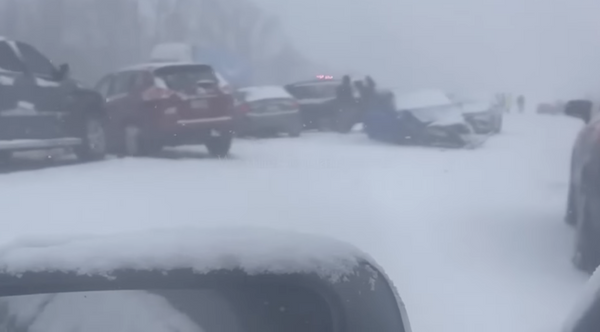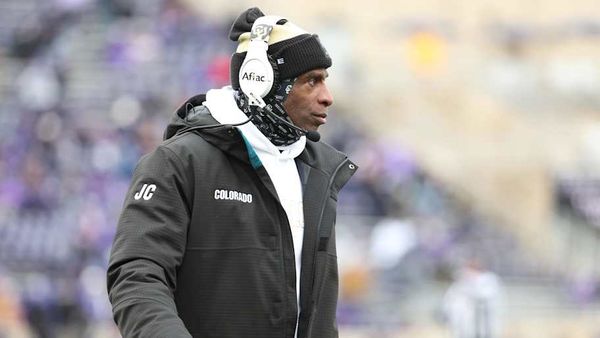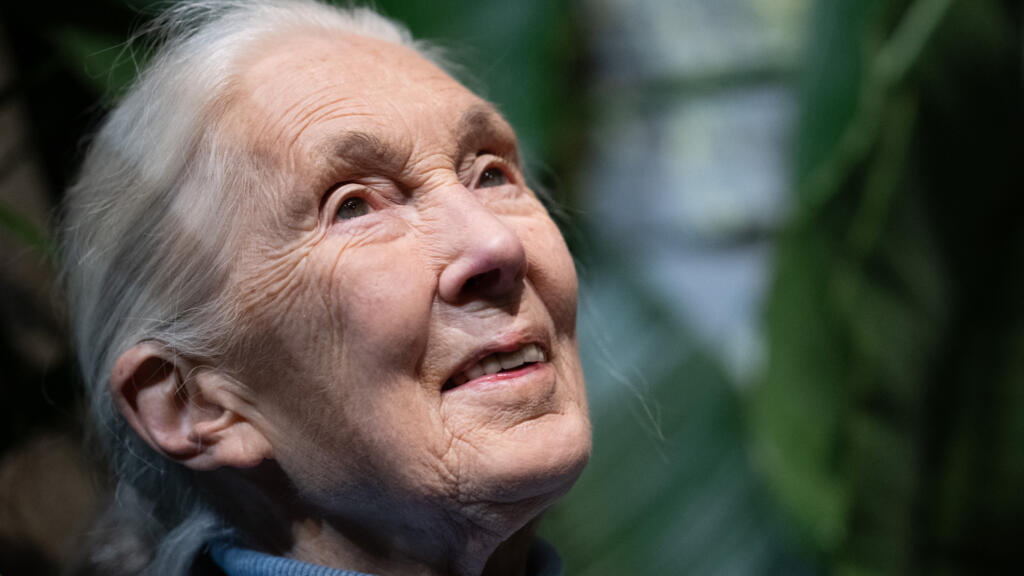
Jane Goodall, who died on Wednesday aged 91 in California, transformed how the world sees animals – and helped redefine humanity’s place in nature. RFI's Alison Hird spoke with Goodall in 2018, when a documentary about her early years in the forest was drawing new attention to her research.
Beginning in 1960, Goodall lived for long periods in what is now Gombe Stream National Park in Tanzania, watching wild chimpanzees at close range. She described how they used tools and hunted and their social behaviour, drawing into question the line people drew between humans and other animals.
Goodall went on to become a leading voice for conservation. She founded the Jane Goodall Institute in 1977 to support science and protect great apes and their habitats, then launched Roots & Shoots, a youth programme now active in some 100 countries.
This interview with RFI was recorded around the release of Jane, a documentary directed by Brett Morgen. It shows the young researcher in the forest and reflects on a life built from a childhood dream.
RFI: There have been many documentaries about you. What do you think this one adds to what we know about your work with chimpanzees?
Jane Goodall: It’s completely different to any other documentary in that it’s much more honest. So it basically shows things as they were. I think that Brett Morgen, the director, the way that he’s interspersed interviews with me today with that early footage is amazing. And one of the things that strikes people again and again is there’s a whole long section of Jane on her own in the forest.
And most people don’t even think, well, obviously she wasn’t on her own, she’s being filmed. And yet there’s such an immediacy about it. And even I when I’m watching it, I think yes, that’s how it was. I was alone like that. That’s exactly how it was.
Jane Goodall, pioneering primatologist and voice for wildlife, dies aged 91
RFI: This was in 1960, in Gombe National Park in Tanzania, very close to the border with Burundi. Probably quite a dangerous place to be, so close to chimpanzees. You were a 26-year-old white female. Were you aware of the dangers?
JG: I don’t think it was dangerous at all. First of all, people have said, well, being a woman must have been a disadvantage. Well actually, no, because Tanzania was becoming independent. White males were considered a sort of threat. But a young girl – innocent, defenceless – they wanted to help.
So I had a lot of help from the local people and from the government as well, once it became independent. And the dangers in the field... not really, you know.
I could have been charged by buffalo. I was, in fact, once. Chimpanzees – they’re not dangerous out in the field. They could be, but they’re not. So I didn’t consider it dangerous. And looking back on it, I don’t think it was dangerous. It became more dangerous once the Congo erupted and we got the people escaping, all the Belgians coming over the lake.
Then things became different. Then you got the genocide in Burundi and Rwanda. It became politically much less stable.
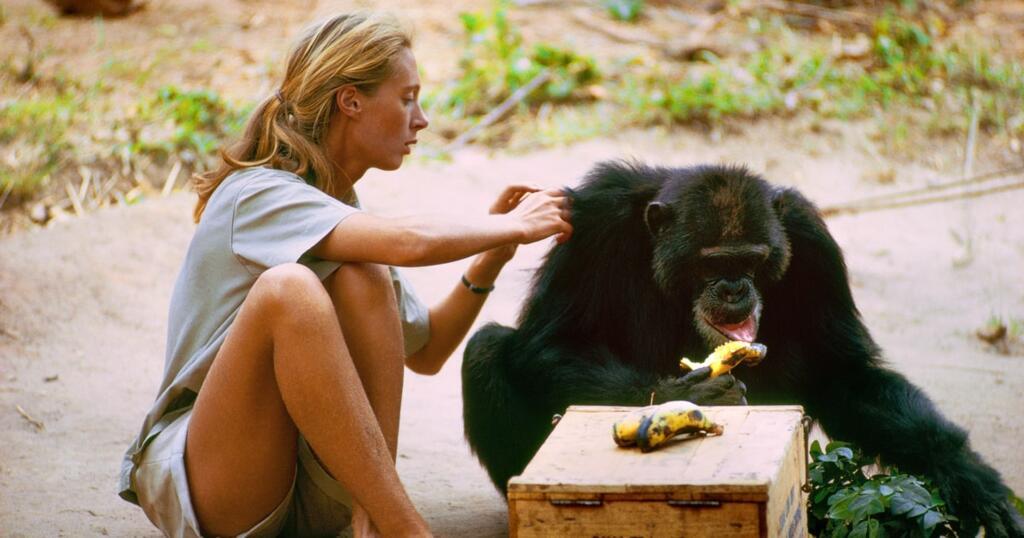
RFI: Just remind us, what made you want to go to Africa in the first place?
JG: When I was eight years old I was reading Doctor Dolittle, and there’s a story where he rescues circus animals and takes them back to Africa. I loved that particular book. And then when I was 10, I read Tarzan and Tarzan of the Apes, and that was it.
So from 10 onwards, that’s all I wanted to do. Go to Africa, live with animals and write books about them.
RFI: In the film we see you saying it was like a dream come true, I felt that this is where I belonged. So really, you felt that was your natural habitat?
JG: Yes. Once I got used to it, it was like my backyard. I knew all the little shortcuts through the forest. I got to know the different animals and the sounds. It was just what I dreamed of all my life.
RFI: Do you prefer animals to humans?
JG: I prefer some animals to some humans, and some humans to some animals. We’re animals too, remember.
Zoologist Jane Goodall warns: ‘The world is a mess’ ahead of COP16
RFI: You’ve moved from being a primatologist to more of an animal activist. You founded an educational NGO, Roots & Shoots. It’s now present in around 100 countries.
JG: Roots & Shoots began in Tanzania in 1991 with high school students. The great thing was that these students weren’t animal rights people – they were worried about poaching in the national parks and asked why the government wasn’t doing anything about it.
They were also concerned about the treatment of animals in markets, about street children sniffing glue and about illegal dynamite fishing.
I sent them back to their schools to gather friends who cared about these problems. From the start, Roots & Shoots was different from other environmental organisations. Its message was that every one of us makes a difference every day – and we choose what sort of difference we make.
We knew from the rainforest that everything is interconnected and each species has a role. So groups often focused on three areas: improving life for people, for animals and for the environment. Sometimes one group worked on all three, sometimes they divided tasks but shared results.
The programme grew naturally. It broke down barriers between people of different nations, religions and cultures – and between us and the natural world. People sometimes say they don’t understand the name, but if you picture a seed sending out little white roots and a green shoot that can grow into a mighty tree, you understand why it’s called Roots & Shoots.
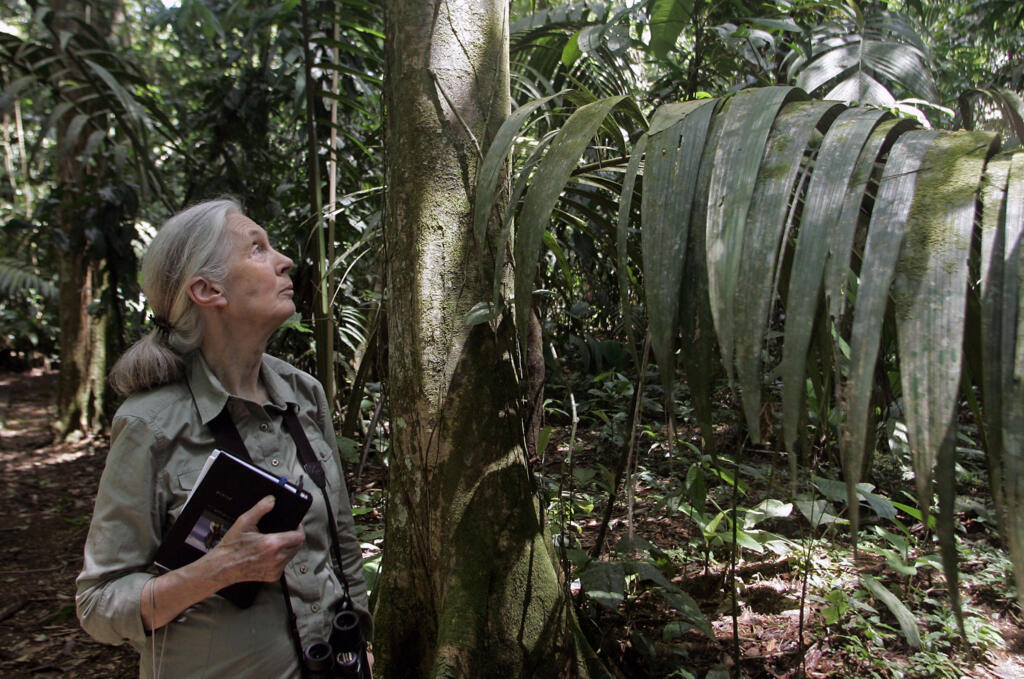
RFI: Can you give us an example of something that a Roots & Shoots project has achieved?
JG: In Tanzania, we’ve got Roots & Shoots in every single part of the country because it began there, and they’re proud of it. They’ve planted between them so many hundreds of thousands of trees. They’ve really worked to improve the lives of animals. They’ve taught their parents about what’s going on with the dynamite fishing. They’ve made a huge difference in clearing trash, beach clean-ups and so forth.
In China, it’s changed the attitude of a whole generation towards animals and the environment – and the number of Chinese adults who’ve come up to me and said, well, of course I care about the environment, I was in your Roots & Shoots programme in primary school, and they showed us the documentaries about the chimpanzees.
So I’ve seen the attitude in China change, and it’s only recently I’ve realised the major role that Roots & Shoots has played in creating this change.
RFI: You travel around 300 days a year. You’re still a very active woman, even in your eighties. And you travel with this little creature called Ratty. He’s a toy, I must add, a stuffed rat. Just tell me, why Ratty?
JG: Ratty was actually given to me. He’s the symbol for a wonderful group called Doctors Against Animal Experimentation, showing that we don’t need to use animals – the rat being the most commonly used.
But I use Ratty not only to talk about the amazing intelligence of the ordinary rat, but the giant forest rat of Africa has been taught to detect landmines from the scent, even if they’re deep buried under the ground.
And they’ve helped to defuse tens of thousands of landmines in Mozambique, Angola and different African countries, and now moving into the eastern world as well.
They can identify the very earliest stages of TB before the hospital instruments, but now some of them have been taught to sniff out ivory, some rhino horn, some leopard skin, some pangolin scales so they can go up among the crates where people and dogs can’t go. And they have managed to find a whole lot of illegally smuggled products of this sort.
RFI: Just another reminder of how intelligent animals can be. Thank you for talking to us, Jane Goodall.
